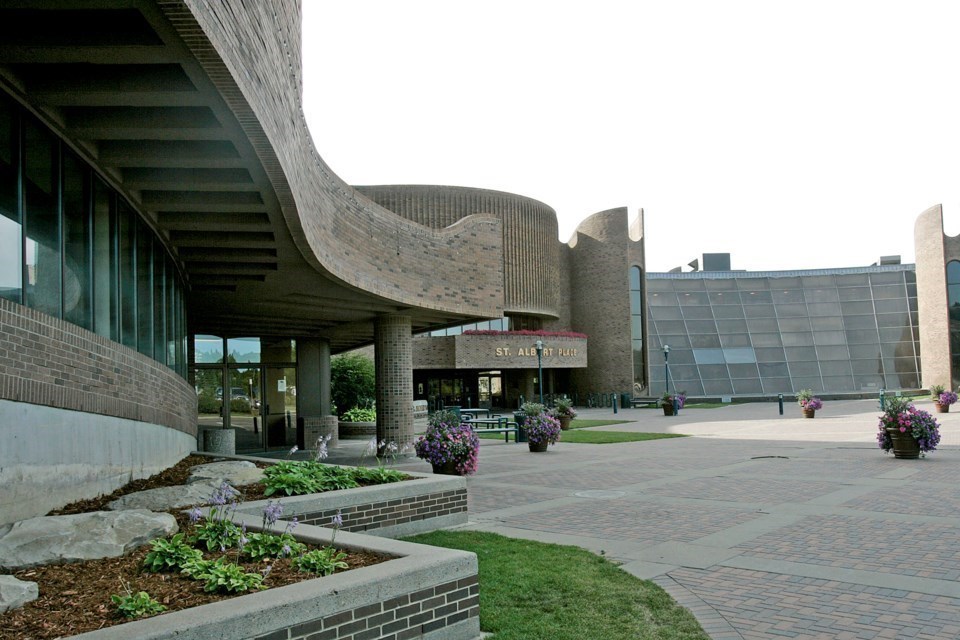St. Albert is unlikely to be able to move forward with even half of its high-cost infrastructure and capital projects planned for the next decade, as the city approaches its long-term debt limit.
St. Albert's debt limit, dictated by the provincial Municipal Government Act (MGA), is just under $300 million. As of the end of last year, outstanding long-term debt was $91.2 million. However, that doesn't include an additional $22 million in borrowing council approved through two recent bylaws. The city also has an internal policy not to take on more than 85 per cent of the MGA debt limit; therefore, the actual figure is closer to $255 million.
During the May 16 committee of the whole meeting to discuss long-term debt strategy, council heard the city will need to prioritize some projects over others because much of the current long-term debt won't be paid off until after 2040.
Diane McMordie, the city's chief financial officer, said administration is prioritizing three of 17 planned projects requiring debt financing.
They include roughly $56 million for critical servicing in the city's northeast quadrant, as homes in parts of Oakmont and Erin Ridge are currently at risk for basement flooding because of the limited capacity of existing stormwater and sanitary infrastructure in the area; at least $80 million for the servicing of Lakeview Business District, although administration expects to finance the project in $20 million phases over the next eight years; and about $16 million for Phase 3 of the ongoing St. Albert Trail roadwork.
McMordie said while administration looks for new funding sources and analyzes borrowing policies in place in other municipalities to see if any policy changes would make sense for St. Albert, council needs to determine its own priorities moving forward.
Coun. Sheena Hughes said one concern is the city front-ending projects with costs that are considered partially or fully recoverable through off-site levies. These can be thought of as a fee charged to developers who directly benefit from the city providing the initial servicing for new areas of development.
“Every time we go into one of these things, we are banking on the relevant land to be developed on a regular basis in a sufficient amount to pay off that debt,” Hughes said. “We can do this for (Lakeview Business District), and I'm not saying we shouldn't, but what we have to realize it's $80 million and if, for whatever reason, Lakeview development gets stalled and the development doesn't occur, we are still making those debt payments.”
“As we continue to do more and more of these ... we're going into a higher and higher risk situation.”
Both the northeast servicing and Lakeview Business District projects are considered 100 per cent recoverable through off-site levies. However, the city will have to take on debt to get the projects off the ground.
Coun. Ken MacKay said he thinks council will only be able to approve critical projects critical such as roads and indispensable infrastructure like wastewater and stormwater facilities.
"I'm looking at debt that is obviously going to benefit the community long term, particularly infrastructure," he said. “We need to build reservoirs, we need to build utilities underground, otherwise, as a community, we reach the capacity and we no longer allow new builds.”
“We keep putting these things off down the road ... the infrastructure is only going to get worse and in worse repair and also at the same time, the cost of replacing it is just going to go up and up and up.”
During the May 16 meeting, Coun. Wes Brodhead said St. Albert is in a position where much-needed projects could be even further delayed because previous councils were reluctant to take on debt.
“In 2010 when I came on to council it was a totally debt-averse council, and quite honestly over time, St. Albert was very proud of its low debt ratio,” Brodhead said. “What was being said at the time was that we don't want to leave our grandchildren drowning in a sea of debt ... and yet we've seen the impact of that over the last 10 years in not really being able to develop the community that we need.”
Brodhead also said he has concerns about the city's risk of front-ending off-site levy recoverable projects.
Coun. Mike Killick said that while he thinks the city needs to prioritize necessary infrastructure, part of the issue with developing a long-term strategy for debt financing is that costs and price estimates for projects may change significantly over time, and council may need to make short-term decisions while still keeping a long-term plan in mind.
“It makes it very complex,” he said. “Especially in this environment where costs are going up for these big projects — before we know it a $30 million police building could turn out to be $40 million with escalating costs of all of our materials.”
“Even a slight change in interest can have a big impact on the total money we have to pay back, so there's that complexity as well that we have to think about.”
Killick said it was to early to say whether council should consider policy changes as part of the long-term debt strategy, such as removing the internal 85 per cent debt limit.
“I think we need to know where we are first, before we start proposing any significant changes,” he said.
“We really have to get all the information on the table before we start talking about any potential changes.”




